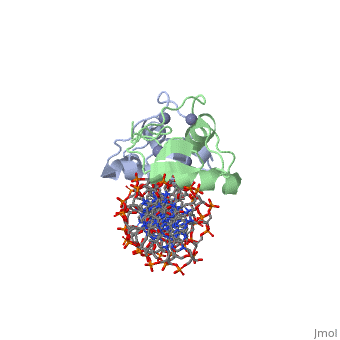Glucocorticoids
Jump to navigation
Jump to search
Glucocorticoids are corticosteroids that bind to the glucocorticoid receptor. is a glucocorticoid medication. It is the most potent glucocorticoid and it has not mineralocorticoid potency.
|
| ||||||||||
See also:
ReferencesReferences
- ↑ Tuteja G, Kaestner KH. SnapShot: forkhead transcription factors I. Cell. 2007 Sep 21;130(6):1160. PMID:17889656 doi:http://dx.doi.org/10.1016/j.cell.2007.09.005
- ↑ Kaiser G, Gerst F, Michael D, Berchtold S, Friedrich B, Strutz-Seebohm N, Lang F, Haring HU, Ullrich S. Regulation of forkhead box O1 (FOXO1) by protein kinase B and glucocorticoids: different mechanisms of induction of beta cell death in vitro. Diabetologia. 2013 Jul;56(7):1587-95. doi: 10.1007/s00125-013-2863-7. Epub 2013, Feb 23. PMID:23435785 doi:http://dx.doi.org/10.1007/s00125-013-2863-7
- ↑ Horwitz KB, Jackson TA, Bain DL, Richer JK, Takimoto GS, Tung L. Nuclear receptor coactivators and corepressors. Mol Endocrinol. 1996 Oct;10(10):1167-77. PMID:9121485 doi:http://dx.doi.org/10.1210/mend.10.10.9121485
- ↑ Arner ES, Holmgren A. Physiological functions of thioredoxin and thioredoxin reductase. Eur J Biochem. 2000 Oct;267(20):6102-9. PMID:11012661
- ↑ Prasad R, Chan LF, Hughes CR, Kaski JP, Kowalczyk JC, Savage MO, Peters CJ, Nathwani N, Clark AJ, Storr HL, Metherell LA. Thioredoxin Reductase 2 (TXNRD2) mutation associated with familial glucocorticoid deficiency (FGD). J Clin Endocrinol Metab. 2014 Aug;99(8):E1556-63. doi: 10.1210/jc.2013-3844. Epub, 2014 Mar 6. PMID:24601690 doi:http://dx.doi.org/10.1210/jc.2013-3844
- ↑ Arner ES, Holmgren A. Physiological functions of thioredoxin and thioredoxin reductase. Eur J Biochem. 2000 Oct;267(20):6102-9. PMID:11012661
- ↑ Fritz-Wolf K, Kehr S, Stumpf M, Rahlfs S, Becker K. Crystal structure of the human thioredoxin reductase-thioredoxin complex. Nat Commun. 2011 Jul 12;2:383. doi: 10.1038/ncomms1382. PMID:21750537 doi:10.1038/ncomms1382
- ↑ Murakami M, Nakatani Y, Tanioka T, Kudo I. Prostaglandin E synthase. Prostaglandins Other Lipid Mediat. 2002 Aug;68-69:383-99. PMID:12432931
- ↑ Kudo I, Murakami M. Prostaglandin E synthase, a terminal enzyme for prostaglandin E2 biosynthesis. J Biochem Mol Biol. 2005 Nov 30;38(6):633-8. PMID:16336776
- ↑ Luz JG, Antonysamy S, Kuklish SL, Condon B, Lee MR, Allison D, Yu XP, Chandrasekhar S, Backer R, Zhang A, Russell M, Chang SS, Harvey A, Sloan AV, Fisher MJ. Crystal Structures of mPGES-1 Inhibitor Complexes Form a Basis for the Rational Design of Potent Analgesic and Anti-Inflammatory Therapeutics. J Med Chem. 2015 May 20. PMID:25961169 doi:http://dx.doi.org/10.1021/acs.jmedchem.5b00330
